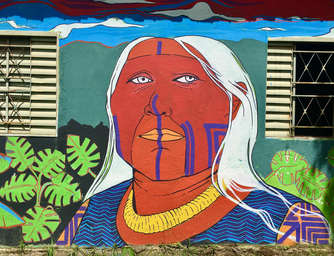When it comes to Latin American Indigenous groups, we can notice their influence on the contemporary culture of the continent. Bolivians, Brazilians, and Colombians indigenous were so important for the history and culture of their country that the customs and clothes of these current populations are still being so similar from those groups in the past. So, here it is how the culture of some Latin American natives has contributed to the life of the people today.
Bolivians indigenous
About two-thirds of Bolivia’s population is indigenous, according to BBC News. So, we can say that, in the past, they have influenced so much in the culture of the country nowadays. However the different indigenous groups in the nation, this culture hasn’t changed over the years. So, some traditions have been maintained, like the use of coca — the material to produce cocaine — for lessening the effects of the altitude. Besides, Bolivian women braid their hair, in the same way, indigenous women have done in the past.
These groups of people are very similar to the Incas and Andeans. They like to be close with all generations of the family, so they live together, on the same roof. Moreover, marriage is also very important for these people. Their art includes handmade products and paintings that were originated by the Spaniards and indigenous groups too. Therefore, if these natives did not exist, the life in this country would be so different.
Brazilians indigenous
Historians estimate that there were 2000 natives groups in Brazil, in 1500. But along the years, many tribes were extinguished and now there are only 305 indigenous groups in the country, according to IWGIA (International Work Group for Indigenous Affairs) — a global organization to protect indigenous people.
Although some groups were extinguished, their culture influenced how the Brazilian customs are today. Colored earrings, handmade necklaces, and bracelets that are sold in craft fairs at the beach. Besides, Brazilian people use home remedies and a variety of types of seasoning, they make sympathies and there are folklore — stories made by natives that are told until today. The tradition of taking more than one shower by the day and lying in hammocks are indigenous customs that are still being used. In conclusion, many traditions were originated by indigenous in Brazil, but what we need to remember most is the Brazilian Portuguese. The language after colonialism emerged by Portuguese but has changed with the indigenous vocabulary.

Colombian indigenous
The typical crafts, music, and dance are the legacies of indigenous in Colombia. Sombrero Vueltiao — a handmade hat– was chosen as the symbol of the country. This hat was made by the indigenous group Zenú. This group represented, through the hat, the natives. Furthermore, there are many more kinds of crafts that are used in this nation, like the Mochila Arhuaca, an artisan bag made by the Arhuaco people.
Also, music is something that shows how the natives influenced Colombia. In this country, almost all the types of music originated from the indigenous. Some of them are: Bambuco, Bunde Chocoano, Chandé, Cumbia, Porro and Vallenato. And each kind of music has been created by one group of these people. Besides, Cumbia, the national type of music, is also a sort of dance. It is folklore and flute rhythm music in which women dance holding candles. It’s a common dance in the cities of Barranquilla and Mompós.
Therefore, it is possible to say that the Latin American indigenous groups were so important for this continent, even nowadays. Bolivia, Brazil, and Colombia are just examples of that, but they show how this place has traditions and customs from these people.
—————————————————————–
The article above was edited by Larissa Mariano.
Liked this type of content? Check Her Campus Casper Libero’s home page for more!



